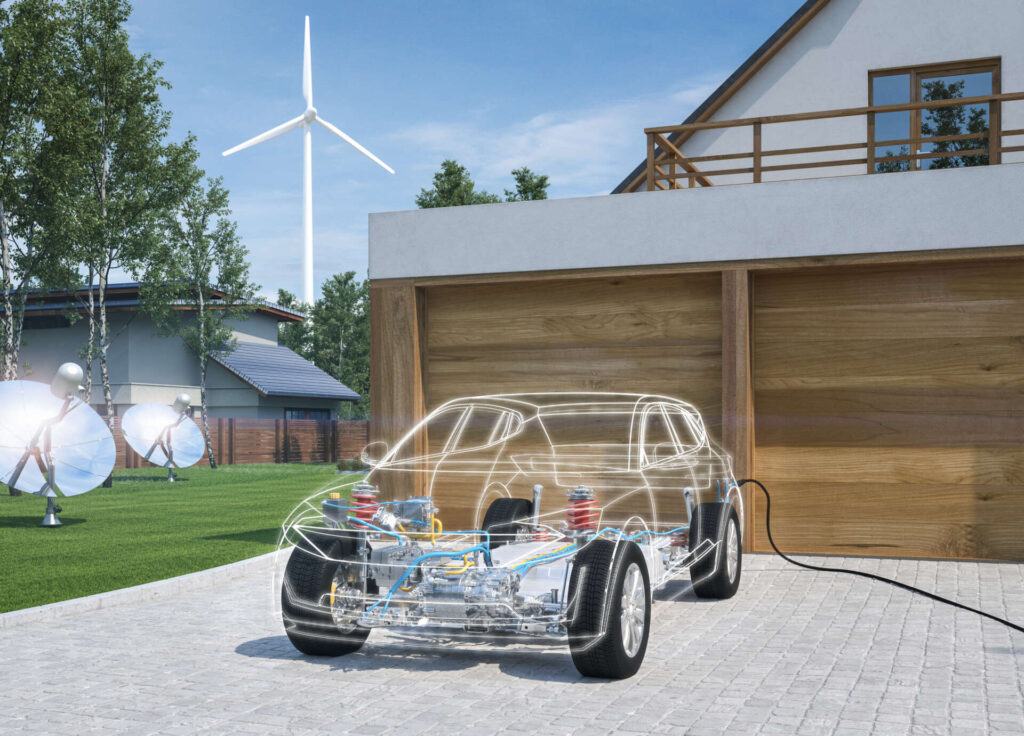
EV – THE ENVIRONMENTALLY VIGILANT DECISION
During the historic year of 2020, our everyday routines changed dramatically. Once neatly separated, various parts of our lives now overlap and intersect. People have been staying at home, and not only from work and school – we have been socially isolating as well. By the second half of the year, many economies reopened, with employees returning to work in some capacity, often partially working from home. It became routine to leave the house only for necessary weekend errands. In 2021, new waves of the pandemic continue to redefine the emerging model of our new normal.
With these newly-emerging behavior patterns, the value of travelling by car, rather than public transit, has gained ground. Global statistics show that there is a stable demand for private car use thanks to the rules imposed by social distancing, and the ability to better control hygienic conditions within our own vehicles. Our vehicles became a safe haven to get us where we had to go.
Sales of electric cars hit record numbers each year
Along with changing personal routines, pandemic-induced lifestyle changes revealed some thought-provoking alternatives. With less traffic on the roads, formerly obscured scenic views were visible again; we could see the results of dramatically less pollution in the air as the world paused for awhile. Along with many weighty topics that the pandemic brought to the forefront, it shone a light on climate change and the methods that we can use to make a positive impact. One option gaining popularity is the growing use of electric vehicles (EV) to support the reduction of CO2 emissions.
According to statistics from the International Energy Agency (IEA) global sales of electric cars saw a 40% year-over-year increase. In 2019, there were 7.2 million electric cars on the road – 2.1 million more than in 2018. Given this market shift, even pre-pandemic, it is likely that the next decade will continue to shift the balance even more towards electric vehicles.

While regional differences remain, major trends show that private car usage is likely to continue to be the number one choice in North America. In some major European cities, variations of electric vehicles are likely to be more prevalent than single car usage. In the meantime, the majority of Asia and South America continue to rely on public transportation and rail travel.
Policies support the choice of electric vehicles
Changes in consumer preferences will undoubtedly bolster this global trend in the next decade. With a new generation of consumers indicating their preference for social responsibility, climate-friendly decisions are appearing in showrooms and OEMs are beginning to offer a wide variety of models at reasonable price points, with increasingly convenient charging options.
Consumers are not the only ones to bring about this change. Governance levels also support these actions with environmental and sustainability objectives. By 2025, the European Union will increase its EV target to 20% of total vehicle sales, while Norway and four major cities suffering from significant air pollution – Athens, Madrid, Mexico City and Rome – will ban gasoline and diesel car access altogether. By 2030, six countries – Denmark, Germany, Ireland, Israel, the Netherlands and Slovenia – are targeting 100% zero-emission vehicle sales and 12 large cities signed the Fossil-Fuel-Free Street Declaration committing themselves to ban internal combustion engine (ICE) vehicles. Not all targets are long-term however; Sri Lanka is aiming for a 100% zero-emission vehicle fleet by this year. (McKinsey&Company: Recharging economies: The EV-battery manufacturing outlook for Europe, May 2019). By June 2020, 17 countries announced 100% zero-emission vehicle targets or the phase-out of combustion engine vehicles through 2050. France will be the first to turn this objective into a law with a 2040 timeframe.
For reducing air pollution and greenhouse gas emissions while supporting energy diversification, policy actions aim to incentivize environmentally-friendly solutions that enable consumers to make socially responsible choices that are still practical and affordable.
The spiral of technology challenges
Shifts in consumer habits and social responsibility awareness, along with government policies issued for the next several decades, pose important technological questions yet to be answered. With the rise of electromobility and increased EV production, the market for EV battery cells will likely grow. To provide sufficient energy supplies to fuel all the electric vehicles projected to appear on roads, battery technology development and manufacturing gigafactories are set to deploy around the globe.

The next level of battery production technology beyond Lithium-Ion Cell Batteries is the development of the „Solid State Lithium Batteries”. With a significantly increased energy storage capacity, faster charging times, increased lifetime and improved safety, combined with a lower production cost, this new technology provides an efficient solution for a growing EV market.
On the other hand, a new market of EV charging resources is now open for early adopters to make decades-long partnerships with EV producers and suppliers. Global EV-battery manufacturers produced almost 60% more storage capacity by 2017 than in previous years, a trend which will likely continue. Out of the announced 70 gigafactories offering energy storage for EV manufacturers, 46 are located in Asia and have long-term deals with global car manufacturers. Local options for supplying batteries are limited. Car manufacturers demand battery producers and storage capacity near their plants to remain competitive in the emobility industry. Battery manufacturers that have facilities near car producers may be the winners of these lucrative opportunities.

How do we envision the future?
The history of electric vehicles dates back to the 1970s, beginning with the research and testing of electrical components production. The future now points towards the diversification of EV models, as well as the upcoming Automated, Connected, Electric and Shared (ACES) technologies and micromobility. The advent of ACES technology has the potential to offer safer and cleaner travel options in the future, offering up a world of environmentally-friendly choices for consumers.
After a year like 2020, consumers are aware of their environmental footprints now more than ever. Our decisions drive the change towards healthier, more cost-efficient, less damaging, faster, more comfortable and safer vehicle options. EVs and the next level of batteries can help us reach these objectives. Electric vehicle manufacturers envision the creation of 70 EV models in the coming years, and this development is increasing with suppliers upleveling to meet the new demands.
With multiple sites in North America’s automotive industry hubs, and a Central European site to serve local transportation manufacturers, Eclipse Automation offers decades of expertise and strategic cooperation with OEMs, Tier1 suppliers, and with battery cell producers.
The Eclipse team provides visionary solutions to problems on the horizon. Eclipse Automation develops advanced manufacturing solutions for the Electric Vehicle industry, from battery packs, to electronic assemblies, inverters, sensors and drive-train assemblies. With its depth of experience within the emobility industry, Eclipse covers the complete range of electric vehicle applications, and has a supply of resources right at its fingertips along with a deep understanding of the complex needs of each customer.

We design and build the future.

